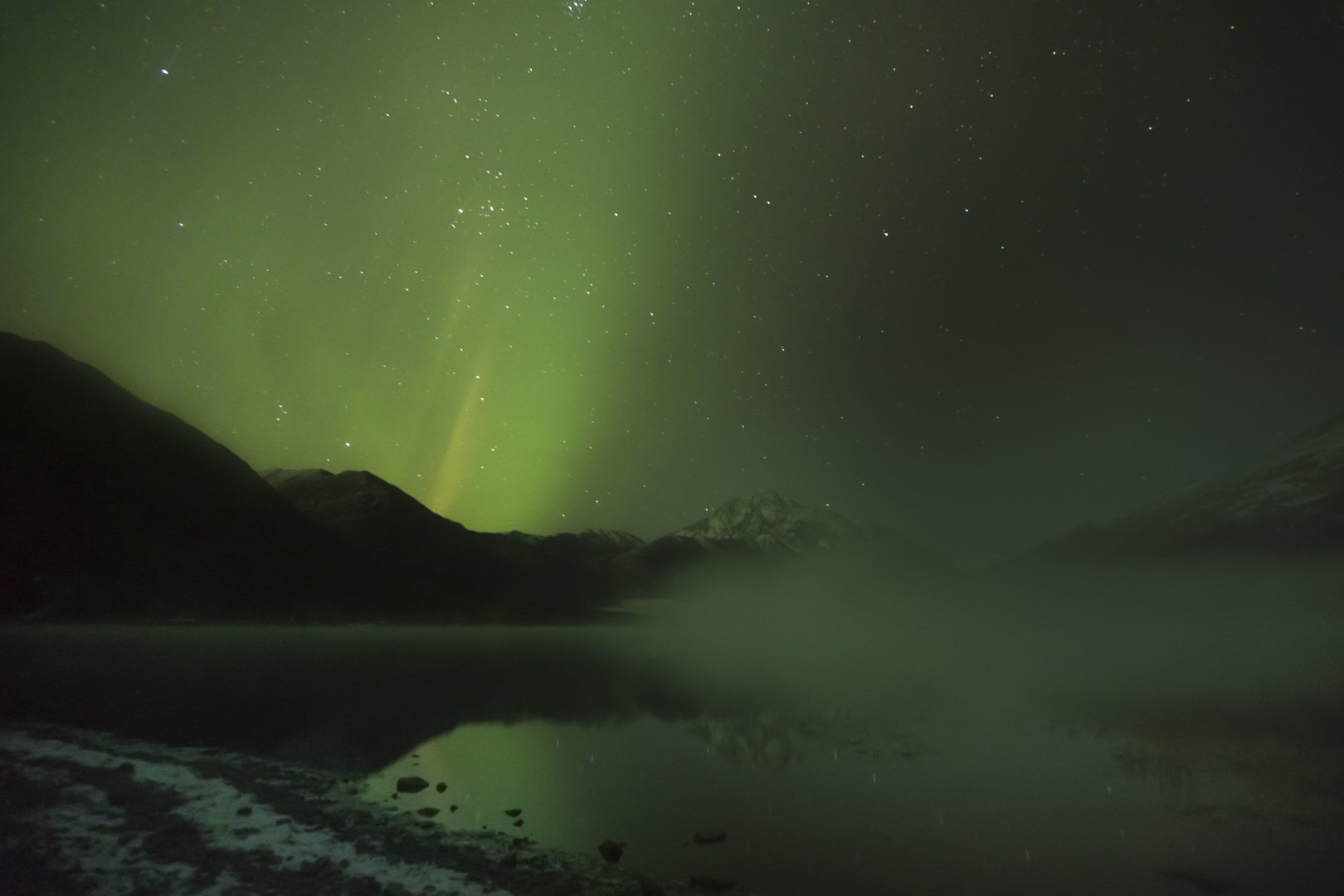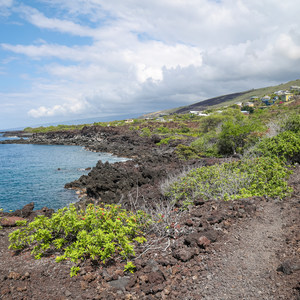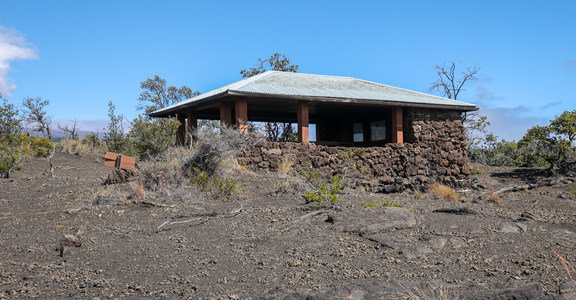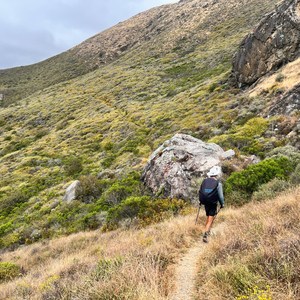You are here
For many, catching a glimpse of the Aurora Borealis—less technically known as the Northern Lights—is a once in a lifetime experience. It’s not hard to understand why sky gazers are enchanted by the ethereal dancing lights and travel hundreds of miles to experience the celestial phenomenon. What’s a bit murkier, however, is understanding what exactly causes the show.
The Causes
As with most jaw-dropping phenomena that occurs on planet earth, it all starts with the sun. The fiery orb that sits at the center of our solar system is a grid of magnetic fields, just like our own planet. When the star rotates on its axis, these magnetic fields morph and distort, and oftentimes become knotted together. In thunderously explosive events, these knotted fields release and explode, causing sunspots and flinging plasma—or solar wind—into space, sending them hurtling toward other galactic bodies.
Earth’s own magnetic fields serve to provide power grids and facilitate communications infrastructure, but more importantly, they comprise a powerful shield from radiation, debris, and other dangerous magnetic waves from space. The sun’s solar wind arrives on Earth 40 hours after the being propelled from sunspots, and only a fraction of the frenzied electrons are able to find their way through. Those that do are enticed by the strong magnetic draw of the poles, and they collide with atoms and molecules from the upper atmosphere. During the energy transfer, all particles become agitated and excited and release excess energy in the form of light, not unlike neon signs.
Tips for Photographers
The best night photographers from all reaches of the globe dream of someday setting up a tripod under the Northern Lights. A number of variables need to line up just right in order to even get a chance to see them. Geomagnetic activity, clear night skies, and the proper location are all integral to seeing the show, all of which have been tediously broken down by NOAA.
We got in touch with avid photographer, Alaskan native, and Outdoor Project Contributor Nell Bishop to understand what it takes to capture the incredible images you can see above.
OP: What first motivated you to try to capture the aurora? What resources did you use while you were learning?
Nell Bishop: I decided to invest in a mirrorless camera around the same time that I moved up to Fairbanks, Alaska, which is one of the best places to see the Aurora. I have always been a night owl, so finding something to photograph outside in the middle of the night seemed like it was meant to be.
I didn’t have a mentor, so I was on my own for the most part. I asked fellow photographer friends for advice once in a while, but I didn’t know anyone with a Sony camera, so I worked through a lot of my problems with the help of YouTube and photographers I happened to meet on location.
OP: Can you walk us through a typical night shooting?
Nell Bishop: I use a Sony a6000 body with the kit lens, a 16-50mm f/3.5-6.5. It’s not the ideal setup for aurora photography but it does the job, and it’s tiny! Before embarking, I’ll check the forecast with The Aurora Service and the Geophysical Institute at the University of Alaska Fairbanks. I’ll mostly focus on the KP levels—those basically indicate how far south the aurora is predicted to make it. The higher the number the better. Then, ideally, the forecast will predict clear skies, though clouds can create interesting contrast in pictures. Clear skies mean colder weather, though, and aurora hunting can result in hours of waiting around for the elusive Lady Aurora, so layers warm clothing are critical. Side note: I've found glasses to be really irritating at -20 degrees because they fog up when you are looking at your camera, so if you have contacts, wear them!
If both forecasts look good I’ll focus on location. I’ll choose a place with a vantage point of the sky to the north to northeast. It’s hard to predict when the aurora will come out, but I've found that they get stronger around 2 a.m., so I’ll arrive on location by 11:30 p.m. Once I'm there I set up my tripod and camera—I start out in manual mode with a shutter speed of 3.2 seconds, aperture set at f/3.5, and ISO set at around 1000, and I’ll adjust from there.
There’s nothing worse than getting home and finding that I took blurry photos, and one of the easiest ways I’ve found to ensure sharp focus is to focus on a star. Using a remote shutter can also help keep photos sharp, but keeping the remote warm is a task, many of them can’t handle the cold—I keep mine tucked into my scarf against my skin. Once I’m set up, I’ll focus on enjoying the moment. The aurora can last moments and they can last hours, that’s part of the joy of the chase, I’ll never know what I’ll end up with.
OP: What’s your favorite place to create an image?
Nell Bishop: My favorite place to capture the northern lights is on the edge of glacially fed Eklutna Lake in the late fall. Situated in the Chugach Mountains just outside of Anchorage, it’s just far enough to escape the glow of light pollution and by the winter season, all the campers have left. I love visiting when the snow has just begun to descend from the surrounding mountaintops. One magical night, the lights emerged from the northeast over the mountains as I arrived and reflected off of the lake below as a dense fog rolled in over the water. It was incredible standing there alone in the expansive darkness and deafening silence knowing I might be the only one experiencing it all at that moment.
OP: What advice do you have for someone wanting to view the aurora borealis?
Nell Bishop: If you want to see the aurora, get to the higher latitudes. The closer to the Arctic Circle you get, the more likely you are to see them. Season is also important—stick to late August through early May. It’s very unlikely to catch the aurora in the summer because there is very little darkness. I’ve heard rumors that they are more active around the equinoxes, but I haven’t been shooting long enough to tell.
My greatest bit of advice is to pay attention to the forecast and find a location from which you can see the north to northeast sky with very little light pollution. Truly, if the aurora borealis is good enough, you don’t have to travel very far out of town. I have even seen them from my doorstep in downtown Anchorage.





Comments
Sign In and share them.